How much do you know about these amazing marine reptiles?
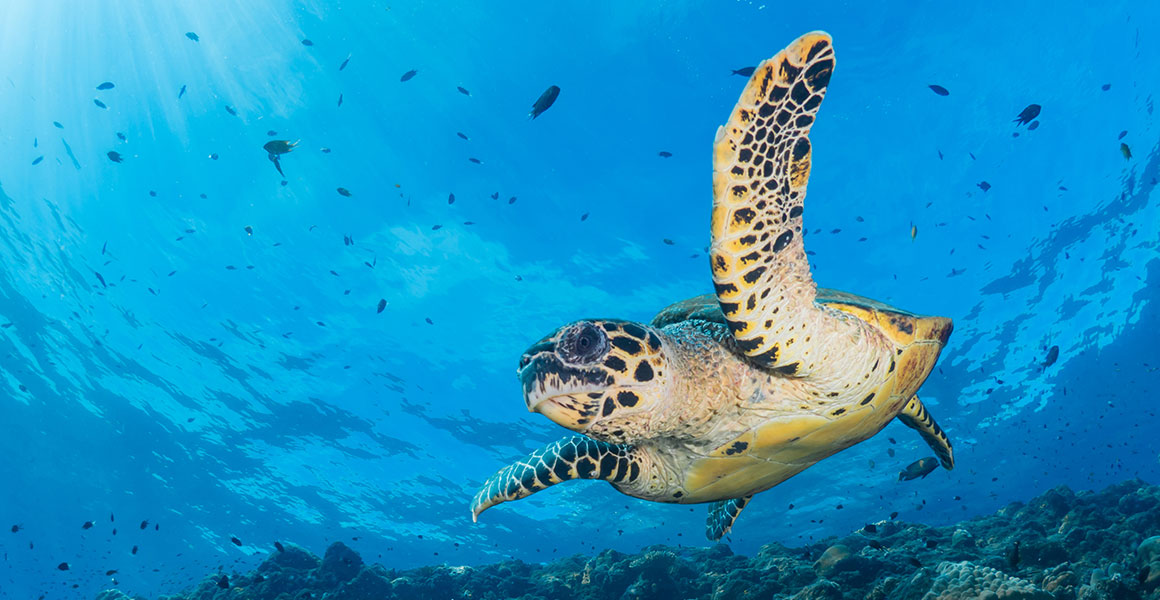
Hawksbill sea turtles are critically endangered. They’ve been hunted for their shells, which are used to produce products such as jewellery. © Mike Workman/ Shutterstock
Discover how many species of sea turtles there are, the biggest specimens ever discovered, what threats the turtles in our oceans face today, and much more.
What is a sea turtle?
Sea turtles are closely related to freshwater turtles and land-based tortoises. These reptiles all belong to a group of animals called Testudines.
They have shells, made mostly of bone, that protect the top and underside of their bodies. Some have tough, leathery skin instead of hard shells – these are known as softshell turtles.
Testudines are ectotherms. This means they need heat from external sources, such as from the Sun, to maintain their body temperature.
Sea turtles are also known as marine turtles. They spend most of their time in the ocean, though they do occasionally come ashore. This is mostly only to lay their eggs on beaches or to bask in the Sun.
In the water their streamlined bodies and long flippers mean sea turtles can be quite speedy. The fastest species zip along at up to 35 kilometres per hour.
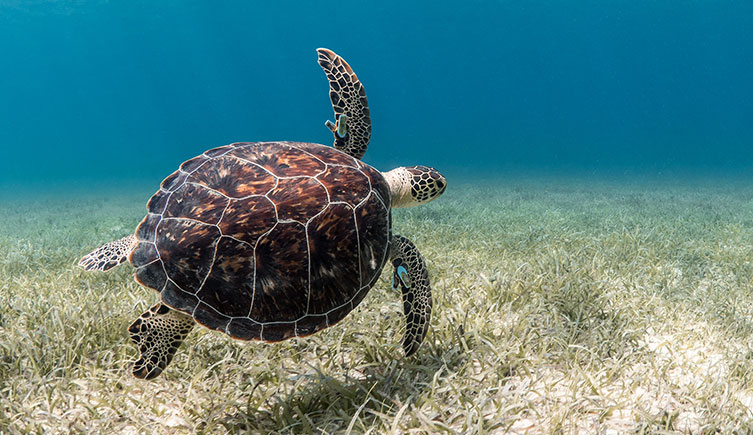
Sea turtles are slow on land but can be quite speedy in the water. © Sophie Hart/ Shutterstock
How many types of sea turtles are there?
Turtles have been around for about 230 million years, first appearing in the Triassic Period. The first sea turtles are thought to have appeared more than 145 million years ago.
Today, there are seven species of sea turtle:
- Flatback sea turtle, Natator depressus
- Green sea turtle, Chelonia mydas
- Hawksbill sea turtle, Eretmochelys imbricata
- Kemp’s ridley sea turtle, Lepidochelys kempii
- Leatherback sea turtle, Dermochelys coriacea
- Loggerhead sea turtle, Caretta caretta
- Olive ridley sea turtle, Lepidochelys olivacea
We split these into two groups. There are the leathery-shelled dermochelyids, which only includes the leatherback turtle, and the cheloniid or hard-shelled turtles, which includes all the other species.
Where do sea turtles live?
Sea turtles are found in all oceans, except those around our planet’s chilly poles.
Flatback turtles have the smallest range – they’re found only from the southern coast of Papua New Guinea to northern Australia. Unlike other marine turtles, they don’t migrate long distances over open oceans.
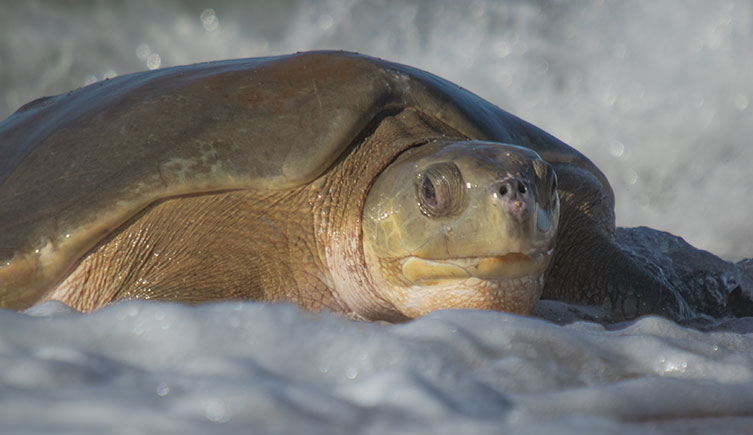
As their name suggests, flatback sea turtles have a smooth, flattened shell, which also has upturned edges along the sides. © Tracey Heimberger/ Shutterstock
When it comes to Kemp’s ridley turtles, where they live depends on how old they are. Adults are mostly found in the Gulf of Mexico, whereas younger turtles migrate up the eastern coast of North America and even travel across the Atlantic Ocean to Europe and Africa.
All the other species of sea turtles live in tropical and subtropical waters all around the world. They’re usually found on continental shelves, which are shallower parts of the ocean, but will also migrate over open oceans. Some even visit the UK from time to time.
What do sea turtles eat?
Sea turtles have a varied diet.
Leatherback sea turtles mostly eat jellyfish – they play an important role in controlling populations of these gelatinous creatures. For Hawksbill turtles, up to 95% of their diet is made up of sponges – in fact, they’re known as spongivores.
Loggerhead, flatback, Kemp’s ridley and olive ridley turtles are all omnivores. They eat a mixture of seaweed, fish, crustaceans, molluscs, jellyfish, sea urchins, crabs and a variety of other marine invertebrates.
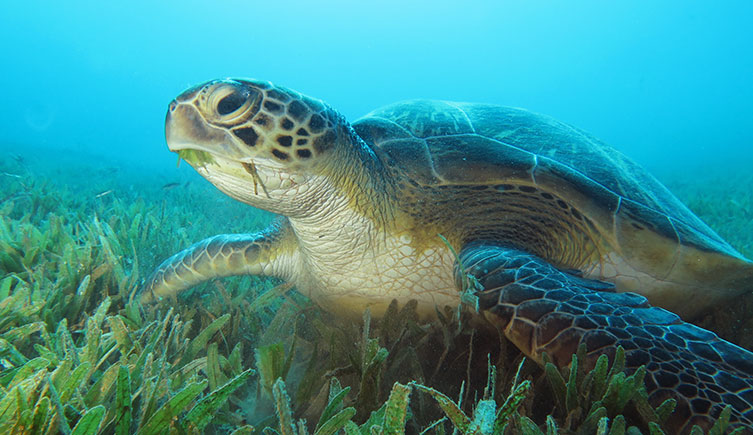
Green sea turtles have a mostly plant-based diet at adults, feasting on algae and seagrasses. © Laura Dts/ Shutterstock
Green sea turtles also start out as omnivores, but as adults they switch to a more algae- and plant-based diet. They’re the only sea turtles that eat large amounts of plants and are often found munching on seaweed, red moss, sea lettuce and seagrasses.
What all sea turtles have in common is that they have spiny protrusions called oesophageal papillae in their throats. They’re made of keratin and help sea turtles hold onto and store their food, while the muscles in their throats push seawater out.
But as our reptile expert Patrick Campbell explains in the video below, this clever adaptation for feeding underwater becomes a problem as our oceans fill with plastic, which can resemble the jellyfish they find so appetising.
How long do sea turtles live for?
Generally, turtles live for a very long time. If we take their close relatives land tortoises for instance, there’s a Seychelles giant tortoise called Jonathan living on the Atlantic island of St Helena that’s over 190 years old. Jonathan may be the oldest living land animal in the world.
But due to their vast marine habitat, it’s harder to keep track of sea turtles, and so, it’s tricky to work out how long they live for. Estimates suggest that they can live for as long as 50 to 100 years, reaching sexual maturity at 10 to 20 years old.
Where do sea turtles lay their eggs?
Sea turtles spend most of their lives in water, but the females all come ashore to lay their eggs. Some have to migrate extremely long distances to nesting sites.
Some species are very particular about where they lay their eggs. Many green sea turtles will return to the beaches they were born on, and leatherback turtles seem to prefer softer sand, as their leathery shells and underside could be more easily damaged by rocks.
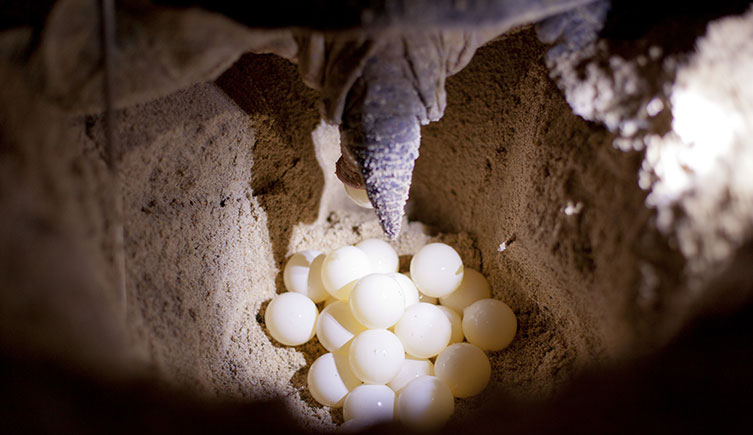
Sea turtles lay their eggs into holes they dig on sandy beaches. © David Evison/ Shutterstock
All but one species – the Kemp’s ridley turtle – lay their eggs at night. Female sea turtles arrive on the shore and slowly drag their heavy bodies up the beach. They’ll then use their flippers to dig a nest in the sand into which they lay their eggs. The number of eggs depends on the species, but some lay up to 200 eggs per nest. The flatback turtle lays the least, with only around 50 eggs per clutch.
The females then cover their nests with sand and return to the sea, leaving their eggs to incubate in the sand. The temperature of the sand affects what sex the offspring will be. If it’s warmer, the sea turtle hatchlings will be female, and if it’s cooler, there will be more males. This is known as temperature-dependent sex determination.
In the video below, Patrick explains why that might become a problem for sea turtles.
Sea turtles can lay multiple clutches of eggs each breeding season, which can span multiple weeks. They mate in the water before climbing back up the beach to dig a new nest and lay more eggs.
While some turtles lay eggs every year, loggerhead turtles can have gaps of two or three years between producing clutches.
Kemp’s ridley and olive ridley turtles have a unique mass nesting behaviour known as arribadas. This is when hundreds, or even thousands, of turtles will nest on the same beach at the same time. Hundreds of thousands of olive ridley turtles will nest on the coasts of Escobilla Beach, in the Mexican state of Oaxaca and the coast of the East Indian state of Odisha each year, with reports of up to 600,000 in some years.
What eats sea turtles?
Sea turtles are most at risk of being eaten by predators when they’re young. The chances of a sea turtle surviving to adulthood are quite low – out of a nest of 100 eggs, it’s estimated that only one turtle will make it.
Turtle eggs are a sizable meal for animals such as crabs, opossums, snakes and caimans.
When they hatch, baby turtles have to run a terrifying gauntlet as they emerge from the sand and rush to the sea. They’re divebombed by seabirds and shorebirds and snapped up by animals including foxes, dogs, monitor lizards, mongooses and genets.
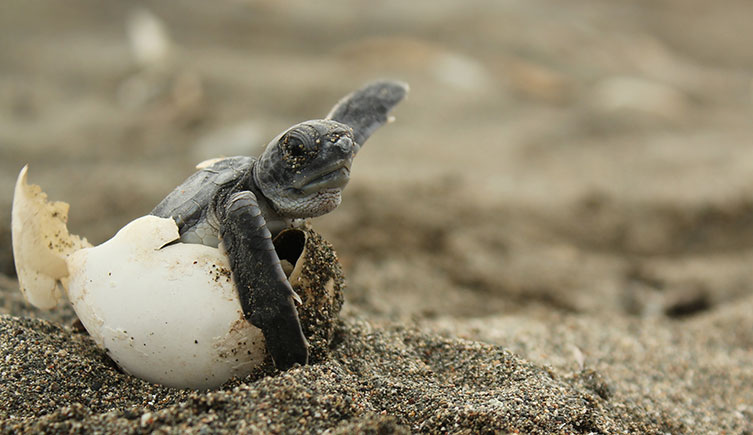
Sea turtles are most at risk when they’re young, facing threats both on land and in the sea. © Mesut Eksi/ Shutterstock
Even when they make it to the water the little turtles are no safer. Cephalopods and large fish will gobble them up, and there is an ever-present threat of a seabird attack.
Once sea turtles reach adulthood, they’re much safer, as their large size and tough shells protect them. The biggest threats they then face are sharks, killer whales and crocodiles, plus whilst nesting on land, in some places females are also vulnerable to being attacked by large carnivores such as jaguars.
How big do sea turtles get?
Leatherback sea turtles are enormous! They’re the largest living sea turtles, generally reaching 1.8 metres long and weighing up to 500 kilogrammes.
However, they can get even bigger than this. One individual that was found stranded in Pakistan measured in at 2.13 metres long. There’s also the Harlech turtle specimen held at the National Museum in Cardiff. This specimen was approximately 100 years old when it died and reportedly weighs 912 kilogrammes and measures nearly three metres in length. Researchers in 2015 disagreed with these measurements, however.
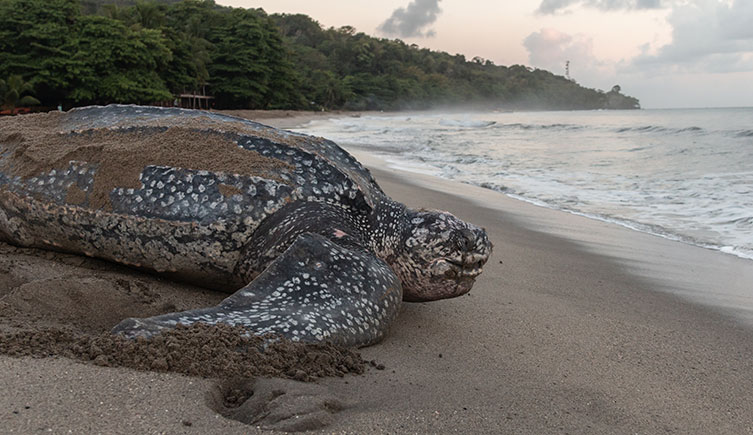
Leatherback sea turtles are the largest species of these marine reptiles. They can be more than two metres long. © Jade Prevost Manuel/ Shutterstock
The biggest sea turtle ever known is an extinct species called Archelon, which could grow to be up to at least 4.6 metres long. This monstrously-sized reptile lived up to 80 million years ago in the Late Cretaceous.
In 2022, Leviathanochelys aenigmatica was revealed to be Europe’s largest sea turtle. It lived more than 70 million years ago and its body was 3.7 metres long. Fossils of this giant creature were found in Spain and experts suggest we might one day find even larger prehistoric turtles in Europe.
In contrast, the smallest living species are the Kemp’s and olive ridley sea turtles. These turtles reach up to about 70 centimetres in length and 50 kilogrammes in weight.
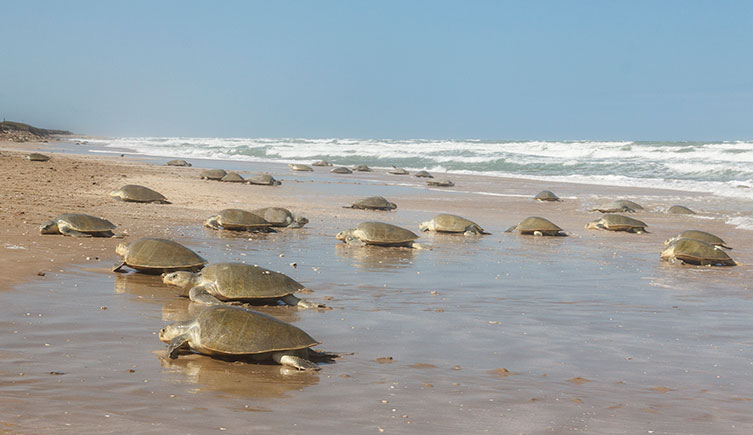
Kemp’s ridley sea turtles perform a mass nesting behaviour where hundreds to thousands of individuals come ashore to nest on the same beach at the same time. © Hrchenge (CC BY-SA 4.0) via Wikimedia Commons
How long can sea turtles hold their breath for?
Sea turtles spend most of their life in water and most of the time they’re completely submerged. But these reptiles must come to the surface to breathe.
In general, they can hold their breath for long periods, 5-40 minutes while they’re foraging for food. But they can also sleep underwater, remaining submerged for four to seven hours at a time.
They don’t need long at the surface, taking a quick exhale and inhale to serve them for their next dive beneath the waves.
While sea turtles have to breathe air, some freshwater turtles have mastered an ability to breathe underwater, but not through their nose or mouth. In the video below, Dr Ashwini Mohan explains how some turtles can ‘breathe’ through their cloaca.
Are sea turtles endangered?
All sea turtle species but one are known to be at risk of extinction, according to IUCN’s Red List. Unfortunately, there isn’t enough data to work out the current status of the flatback turtle.
Threats to turtles are numerous, but the greatest risk to their survival is us.
Among the issues are entanglement in fishing gear and other trash we leave in the ocean. They also accidently consume plastics and juveniles can get plastic rings caught around them that deform their shells as they grow. Boats collide with them, oil spills lead to health problems and they live in an environment we have filled with pollution.
Sea turtle tourism can also negatively impact them, with people flocking to see and photograph females as they lay their eggs. Light and noise pollution around nesting sites can also disorient nesting turtles and hatchlings.
Climate change could also cause problems for sea turtles. As the planet heats up due to global warming, we may see more female turtles hatching than males. This might lead to a lack of mates when the females reach maturity, which could result in sea turtle populations crashing.
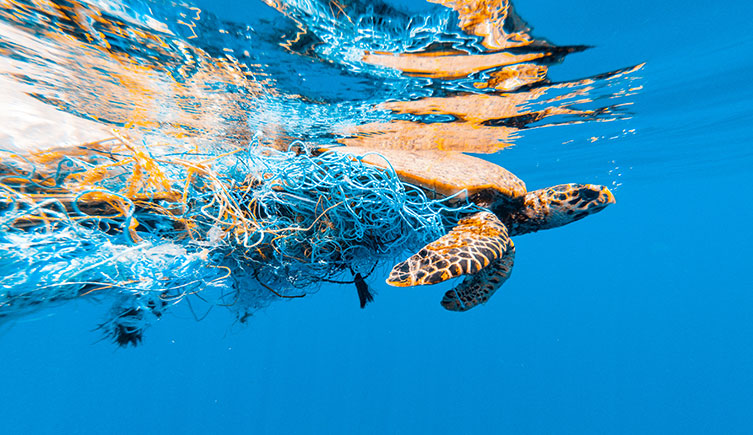
Sea turtles face lots of threats, but the greatest risk to their survival is us. © MOHAMED ABDULRAHEEM/ Shutterstock
Hunting is yet another problem, with the reptiles and their eggs considered an exotic delicacy or beneficial in traditional medicine in some areas. Their shells – particularly of hawksbill turtles – are in demand for a variety of tortoiseshell products including in the manufacture of spectacle frames, jewellery and furniture ornamentation. The shells themselves are also acquired to be decorative items.
All seven species are now protected by CITES however, which means there is an international restriction in the trade of sea turtles and products derived from them.
You may be able to take steps to help protect turtles, such as by switching away from plastic bags and other items made of plastic, or not releasing balloons, as these can end up in the ocean and accidently swallowed by turtles. Discover more ways you can make small changes to help our planet.
Sea turtles are seen in the UK, with the leatherback being the most frequent visitor to our shores. If you see a sea turtle, you can report it to the Marine Conservation society to help experts learn more about the current health of our oceans.
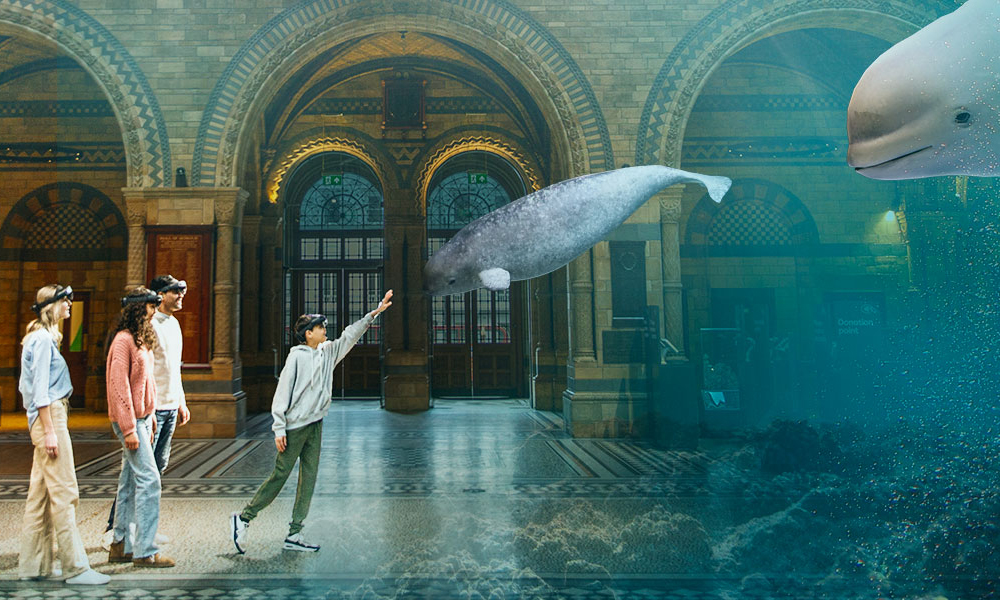
Ever wondered what life could be like?
Step 100 years into the future with Visions of Nature, our new mixed reality experience, to explore what could lie ahead for the planet.
Open from 24 October, tickets just £9.95
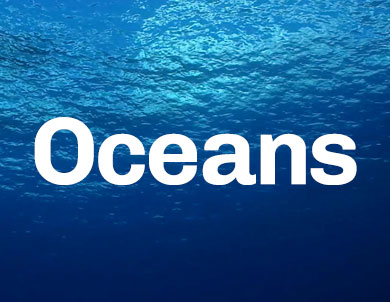
Discover oceans
Find out more about why we need to protect oceans and read about the pioneering work of our marine scientists.


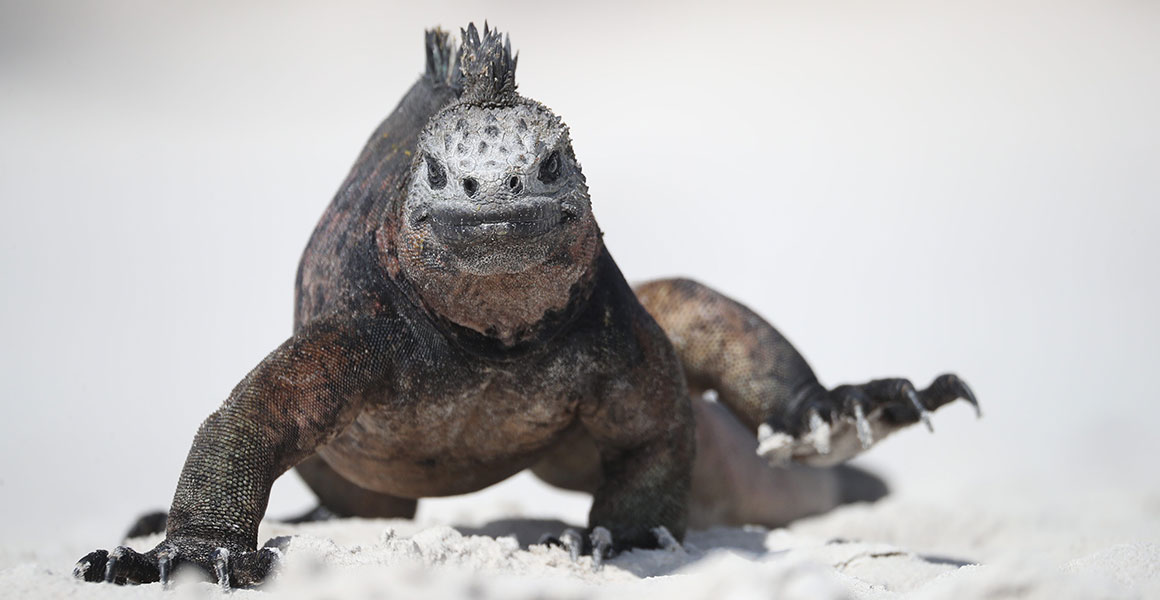
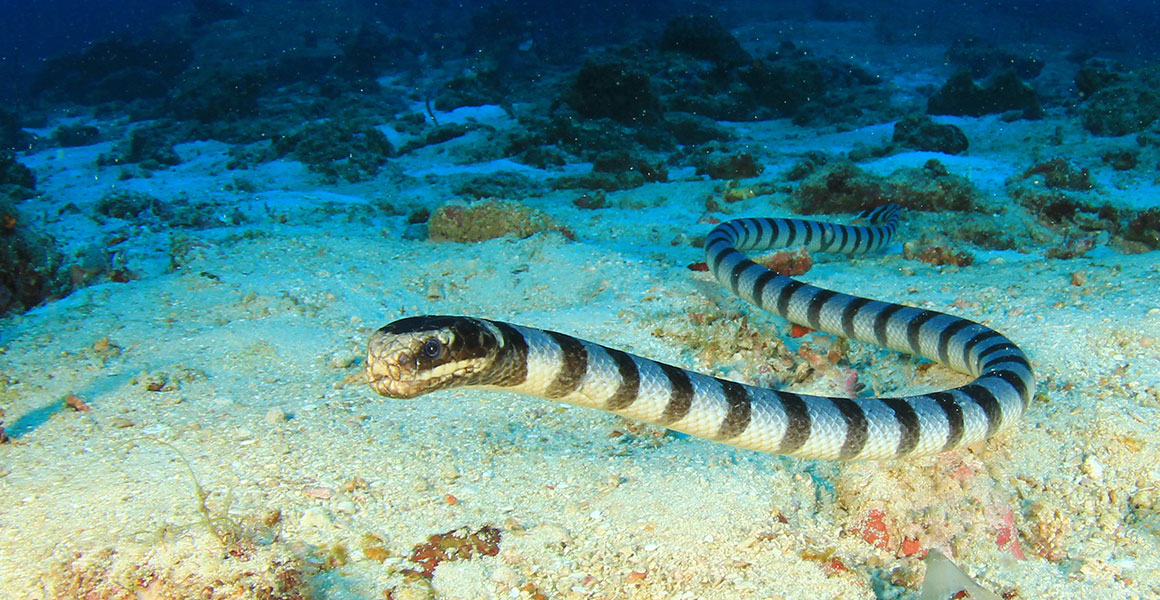
Don't miss a thing
Receive email updates about our news, science, exhibitions, events, products, services and fundraising activities. We may occasionally include third-party content from our corporate partners and other museums. We will not share your personal details with these third parties. You must be over the age of 13. Privacy notice.
Follow us on social media